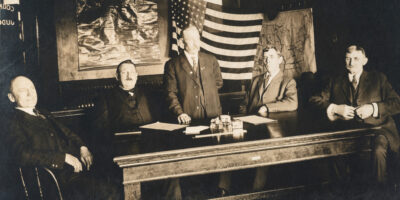Das Karl Marx Problem
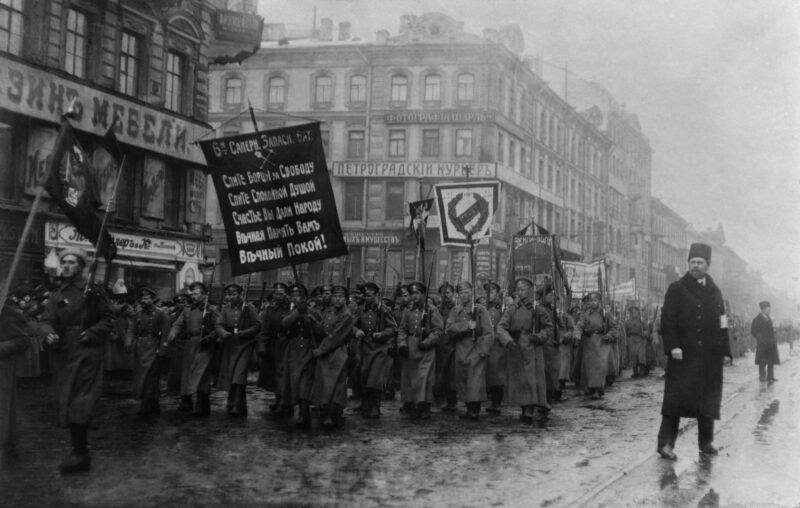
In his classic book the Logic of Collective Action, Mancur Olson observed a peculiar feature about socialist political organizing. Marxist theory envisions itself as a manifestation of collective class interests, with the proletarian class being the most numerous. Yet as Olson noted, “the ‘Marxian’ revolutions that have taken place have been brought about by small conspiratorial elites that took advantage of weak governments during periods of social disorganization.” Marxist revolutions, it seemed, were not an inevitable result of a basic numbers game once class consciousness had been awakened. They emerged from Lenin and his many copycats staging violent coup d’etats to place themselves in power.
Marxist intellectuals have long struggled with this implication, as it points to political actions – including actions involving insurrection, subterfuge, and mass bloodshed – as the primary mechanisms for bringing their desired socio-economic system into existence. Perhaps understandably, they wish to retain the theoretical framework of Marx but strip it of the violent legacies of Lenin, Stalin, Mao, Pol Pot, Castro, and other discrediting political figures.
In a new article, we examine a related question: to what degree is Marx’s own reputation as an intellectual dependent on the political “successes” of his followers in the early 20th century? The answer, it turns out, is quite a lot. Our full paper recently appeared online in the Journal of Political Economy, and presents an empirical investigation into the role of the Soviet Revolution of 1917 in “mainstreaming” Marx’s intellectual reputation.
It’s admittedly a complex question, but to answer it we start by looking at a scholarly conundrum. For the sake of simplicity let’s call that conundrum ‘Das Karl Marx Problem’ as an homage to the socialist thinker.
‘Das Karl Marx Problem’ boils down to a paradox surrounding his academic reception. In decades following his death in 1883, Marx’s theories were thoroughly scrutinized by other economists and almost universally rejected. Marx’s 1867 masterwork Capital constructed its central argument upon a flawed theory of value –the Labor Theory of Value. Starting with a pair of books by Carl Menger and William Stanley Jevons in 1871, economists began to dissect problems with the Labor Theory of Value, finding that it simply couldn’t explain many observable real world scenarios. Instead, they realized that economic value derives from individual subjective preferences exercised on the margin of decision-making.
There was another problem with Marx’s system as well. The math of constructing an economy around labor-derived “surplus value” simply didn’t add up, because it struggled to convert labor – an important input of economic production – into a functional price. Marx’s theory in Capital vol. 1 assumes that exchange values (prices) derive from labor performed. But vol. 3, in attempting to explain how market rates of profit are equalized, posits instead that exchange values differ from labor costs. But if inputs are purchased at market prices too, an empirical circularity emerges in Marx’s reasoning. Marx’s own unpublished works struggled to get around this contradiction, mostly by playing semantical games. In 1896, Eugen von Böhm-Bawerk highlighted this internal contradiction – which is independent of the marginalist critique of the labor theory of value. And writing in 1907, mathematician Ladislaus Bortkiewicz conclusively illustrated that Marxist “Transformation Problem” could not be solved as Marx intended.
The dual onslaught of these challenges to Marx’s system rendered it impotent. Within a few decades of his death, the “Marginal Revolution” had won out in the economics profession, where it remains the accepted basis of a theory of value today. By the time Lenin came along in 1917, Marx’s economic theories were already considered outdated and impractical. No less a source than John Maynard Keynes would deem Marx’s Capital “an obsolete economic textbook . . . without interest or application for the modern world” in a 1925 essay.
Yet our conundrum continues after the early demise of Marx’s economics. While Marx’s economic theories faltered by the early 20th century, Marx’s intellectual reputation has continued to rise into the modern era. Today, Marx consistently ranks among the most heavily cited figures in history as measured by academic journal references. His works are also among the most frequently assigned readings in U.S. college course syllabi. Curiously, Marx’s reputation grew and solidified in fields that largely ignored him in his own time: the humanities, arts, and soft social sciences.
Thus we arrive at ‘Das Karl Marx Problem:’ how do we reconcile the decisive and early rejection of Marx’s economic theories after the Marginal Revolution with the high acclaim that those same theories enjoy among intellectuals today, albeit almost entirely outside of the economics profession?
To answer this question, we must turn to political events.
Historians have long wrestled with the slow uptake of Marx’s theories in the decades after his death. As Alan Ryan observed “Marx’s economics were not taken seriously other than on the Marxist left” in the early 20th century. Kirk Willis, in a classic study of Marx’s reception in Britain, similarly notes the “inescapable fact” that “the Marxist alternative was rejected by an overwhelming majority of late nineteenth century Englishmen – whether economists, labour leaders, workers, politicians, or intellectuals.” By the 1920s and 30s, Marx had emerged from this position of relative obscurity in the wake of a geopolitical event, the Soviet Revolution.
That event makes for an intriguing thought experiment, proposed many times but seldom investigated. Did the political successes of Lenin and the Soviets serve a simultaneous purpose of rescuing Marx’s doctrines and elevating them into wider prominence? Frederick Charles Copleston hinted as much in his celebrated multi-volume history of philosophy. So does Loren Lomasky, who ponders but for Lenin that Marx might enjoy “roughly the same number of textbook footnotes enjoyed by other defunct nineteenth century economists of similar stature – Nassau Senior, for example.”
In more recent years, economist Branko Milanovic has proposed the same thought experiment. If not for World War I, he speculates, “It is not impossible to think that Marx’s influence would have steadily gone down as the social-democrats in Germany moved toward reformism and ‘revisionism.’ His picture would have probably been displayed among the historical ‘maîtres à penser’ of the German social-democracy but not much of his influence would have remained, whether in policy or in social sciences.” So what changed? Milanovic continues: “But then the October Revolution and Lenin came.” The result “‘catapulted’ Marx’s thought and fame.”
To investigate these questions empirically, we turn to the latest advances in econometrics. Using Google’s Ngram tool, we assembled a list of over 225 prominent historical thinkers from the intellectual canon. They include economists, philosophers, political theorists, socialists and non-socialists, literary figures, and even a few scientists of note, all of whom lived either roughly contemporary to Marx or who preceded him. This allows us to tabulate and track the rates at which various authors’ names appear in printed books over time, and compare them with each other.
Marx’s Ngram patterns are intriguing. Throughout his lifetime and the next three decades after his death, they are relatively flat. Late 19th century writers do reference his work as with the aforementioned Marginalist critiques of Marx, but the rate is relatively low and unchanging. Although we have difficulty measuring the absolute level of Marx’s citations (for reasons detailed in our paper), nevertheless, the level of Marx’s citations grows at the same relative rate as those of fellow socialists such as Johann Karl Rodbertus and Pierre-Joseph Proudhon. Beginning in 1917 though, Marx’s citations turn sharply upward, unlike nearly any other author in our dataset, including figures such as Adam Smith, Herbert Spencer, and John Stuart Mill. In just a few years, they triple in frequency and continue on that trajectory until the present. Our hypothesis, then, is that Lenin and the Soviets are likely candidates for this sudden spike in Marx references – both in the interest they generated around the relatively obscure Marx’s ideas, and in their subsequent promotion of Marx as the primary theorist of the revolution and Soviet state.
To test this hypothesis, we used an econometric technique called a Synthetic Control. This approach takes the 225+ author dataset we assembled and finds a weighted composition of other authors whose own citation patterns “fit” those of Marx up until 1917. The weighting is done by algorithm to minimize biases, essentially allowing the computer to pick the authors that most closely track Marx’s pattern. This allows us to generate a “synthetic Marx” counterfactual for the years after the suspected treatment effect of the 1917 Soviet Revolution. We take the pre-1917 weights from the other authors and extrapolate them forward to see how they performed after 1917. If the real Marx diverges from the synthetic counterfactual, we have our first sign of a causal relationship. It would show that the Soviet outcome boosted Marx, but not the authors who comprised the weighted synthetic measure.
As we suspected, our results point to a profound and statistically significant divergence after 1917.
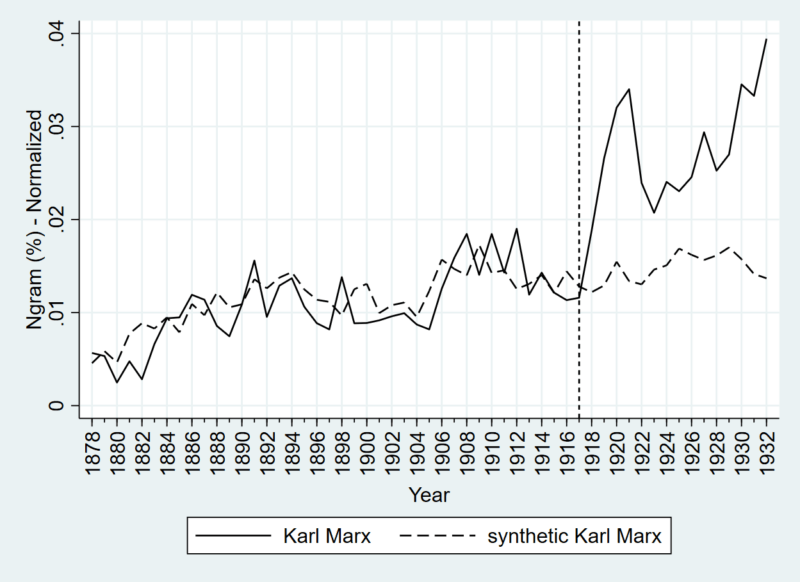
With our theory now validated by this finding, we then subject it to a series of robustness tests to identify and eliminate other possibilities. In perhaps the most important question for further testing, we wanted to determine whether our findings held up in languages other than English. Marx wrote most of his works in German, and many Marxists hypothesize that his ideas took root in the German-speaking world before it filtered over into English. Marx attained something of a following in several German labor movements and leftist political parties before 1917, and also inspired the failed Spartacist uprising of 1919 in Germany. To test whether Marx took root at an earlier date in Germany, we repeated our analysis through several additional iterations that focused only on German-language Ngrams and German-speaking authors.
The results confirm our English-language findings, and belie the oft-speculated earlier influence of Marx in Germany. What’s more, they also revealed two successive treatment events that altered the subsequent reception of Marx in German-language sources. After spiking in the wake of the 1917 Soviet Revolution, German Ngrams of Marx suddenly plummeted in 1933. This is an obvious effect of the Nazi regime taking power and censoring socialist works, including Marx. The pattern changes again with a sharp spike after 1946, as the Soviet Union sets up an explicitly Marxist state in East Germany. In each case, the German-language results show that Marx’s citation patterns are highly responsive to a succession of political events that promoted, suppressed, and again promoted his work.
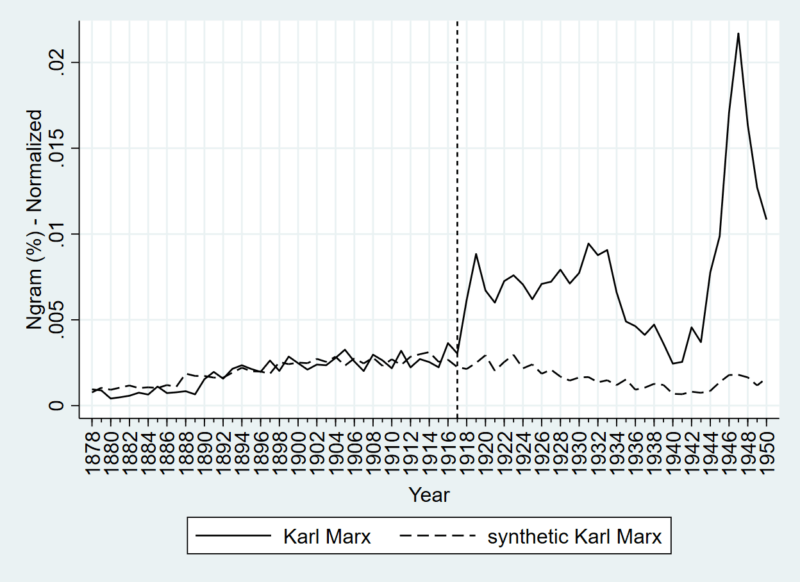
We also asked the question of whether our results would hold up if we used a different measure than the Ngram database. Ngram statistics are calculated from scanned books that are part of the Google corpus. While the data contained therein are massive, they only reflect the contents of printed books. Shorter form publications such as newspapers and magazines are not included.
To see if our thesis held up elsewhere, we turned to the online scanned newspaper database from the subscription service Newspapers.com. Using a subset of our author pool, we constructed an original newspaper database of author mentions to parallel the Ngram series for books. We then ran the same synthetic control test, and found independent confirmation of our results. As with books, newspaper mentions of Marx sharply spiked after 1917. The only major difference was 1883 when Friedrich Engels paid for a telegram broadcast of Marx’s obituary after his funeral, causing a temporary spike in newspaper mentions that dissipated the next year.
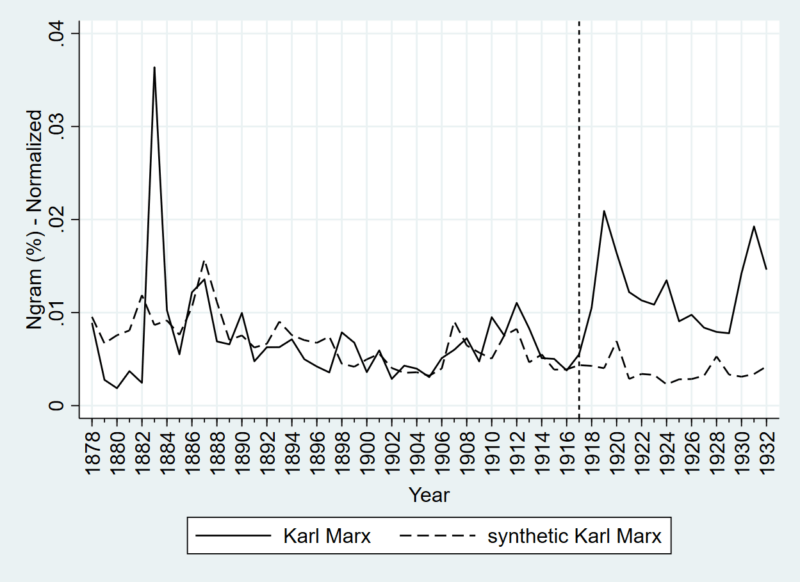
Our empirical investigation continues with additional robustness checks to see if our main results hold. For example, we run a series of tests to determine if the findings from 1917 are a spurious coincidence by varying the year of the treatment (it isn’t). We also looked at other surrounding events such as the failed Russian Revolution of 1905 to see if it triggered an earlier surge of attention to Marx (any signs of this are dwarfed by the effects of 1917). We tried limiting our study to only socialist writers to see if something unique emerged in their citation patterns (it didn’t). With these and other factors taken into consideration, we are confident that we’ve identified the single most important cause for Marx’s citation surge. The Soviet Union played a primary role in elevating Marx into the intellectual mainstream, and likely caused his relatively low and relatively flat Ngram pattern to skyrocket in its immediate aftermath.
‘Das Karl Marx Problem,’ it would appear, is resolved by studying the intellectual fallout after Lenin seized control of a major world power’s government in a time of chaos and forcibly imposed a Marxist state on its population.
These results are, expectedly, controversial in some quarters. And in no place is this more evident than among the followers of Marx today. Curiously, the initial reactions we’ve seen from Marxists reveal an internal schism in their ranks. About half of the Marxist respondents consider our finding obvious, even questioning why we would go to such lengths to “prove” that which they already knew. Indeed, following the materialist view of history, Marx himself might have trumpeted evidence that intellectual ideas are largely determined by political events. The answer is the other half, who adamantly deny the role of Lenin’s government in mainstreaming the Marxist intellectual tradition. Eager to dissociate themselves from the baggage of the Soviet Union’s legacy, they cast about for other and more palatable explanations for Marx’s citation spike. The favored candidates so far are Marx-adjacent political parties in pre-1917 Germany, and the founding of the western Marxist Frankfurt School in the 1920s, although the empirical evidence for these theories is underwhelming compared to the Bolshevik effect in 1917.
With one Marxist faction insisting that our results are too “obvious” to warrant attention, and the other denying their validity altogether, the need for an empirical resolution to the question is inadvertently highlighted.
Suffice it to say that any such empirical investigation would need to use tools that minimize the introduction of human bias. It doesn’t suffice to cherry-pick a few citations of Marx in a work from 1905 and insist that they trump aggregated empirical data patterns across millions of pages of text. Nor can we simply discern Marx’s influence by eyeballing where his ngram patterns parallel other authors. The synthetic control technique helps to get around these problems by letting the computer identify and pick the composite figures.
The result is an entirely plausible counterfactual Marx, composed primarily of his socialist competitors such as Ferdinand Lassalle and Johann Karl Rodbertus.
Note that we do not claim that Marx would have disappeared from relevance in the absence of 1917. Nor do we suggest that Marx’s work received no attention before 1917, as some of our lazier critics have contended. Plainly, Marx attracted attention – albeit harshly critical – from other economists in the late 19th century, who went to work dissecting and rebutting his theories. He also had followers, albeit mostly among radical labor activists. Our question, though, concerns his place in mainstream scholarly discussions.
The “what if?” story of our counterfactual suggests that, absent the events of 1917, Marx would have continued to be an object of niche scholarly inquiry and radical labor activism. He likely would have continued to compete for attention in those same radical circles as the main thinker of one of its many factions. After the Soviet boost to Marx, he effectively crowded the other claimants out of socialist-world.
Of course, academic specialists also noticed Marx both before and after 1917. Alfred Marshall assessed his economic doctrines in an 1890 textbook by describing them as an exercise in circular reasoning disguised in “dense Hegelian language.” Later, in a 1907 article in the Economic Journal, Alfred Marshall mentioned Marx alongside Adam Smith and J. S. Mill – but crucially, in the same breath as Ferdinand Lassalle too, who – despite his historical importance – is not cited anywhere near as frequently as Marx is today. Others had a more favorable view, and still more engaged Marx through his successors and later claimants.
But the events of 1917 provided a remarkable boost to Marx’s salience in intellectual discussions. The sociologist Max Weber had known Marx’s work for some time, having jousted with his Marx-influenced contemporary Werner Sombart over the theory and meaning of capitalism. Yet Weber’s classic 1905 study The Protestant Ethic and the Spirit of Capitalism almost entirely avoids Marx’s name, save for a single passing footnote.
Shortly before his death some 15 years later, Weber spoke to a small group of students about the philosophical landscape of the time. “The world in which we live as intellectuals,” he explained, “bears largely the imprint of Marx and Nietzsche.” It was a world in which the doctrines of both thinkers were ascendant and in tension, directly paralleling the political developments that had made them so.




